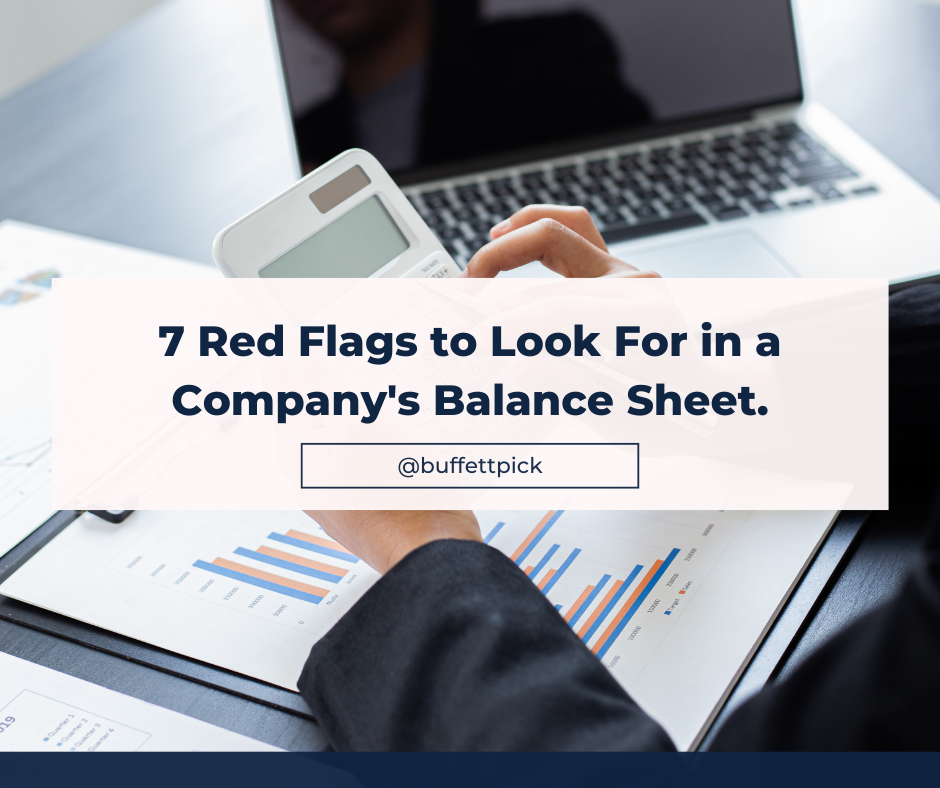
A company’s balance sheet is like its financial fingerprint. It provides a snapshot of what it owns (assets), what it owes (liabilities), and the value left over for shareholders (equity) at a specific point in time. While a single income statement can be dressed up for a party, the balance sheet reveals the long-term habits and financial health of a business.
Learning to spot the warning signs hidden within its lines can save you from making a poor investment. Here are seven critical red flags to look for when you’re scrutinizing a company’s balance sheet.
1. Rising Debt, Flat or Falling Cash
This is one of the most straightforward warnings. A company taking on more debt without a corresponding increase in cash is likely using that debt to fund operations rather than growth—a dangerous sign.
- What to Look For: Compare the Total Debt (found under Liabilities) and Cash & Cash Equivalents (under Current Assets) over several quarters or years. If the debt line is climbing steadily while the cash line is stagnant or declining, it’s a major red flag.
- Why It’s Bad: It suggests the company is becoming increasingly leveraged and may struggle to service its debt (make interest payments), especially if interest rates rise or earnings dip.
2. Sky-High Goodwill
Goodwill is an intangible asset that appears on the balance sheet when a company acquires another for more than the fair value of its net assets. While not inherently bad, a disproportionately large goodwill balance is a risk.
- What to Look For: Compare Goodwill to Total Assets. If goodwill makes up more than 50% of the total assets, it should give you pause. Some companies have goodwill representing 70-80% of assets.
- Why It’s Bad: Goodwill is subject to impairment charges. If the acquired company underperforms, the parent company must write down the value of goodwill, creating a massive, non-cash expense that crushes earnings in that period.
3. Inventory Piling Up
For companies that sell physical goods, inventory management is crucial. Rising inventory levels can signal two troubling things: slowing demand or poor management.
- What to Look For: Track the Inventory line item over time. Compare its growth to the growth in revenue (on the income statement). If inventory is growing much faster than sales, it’s a clear warning.
- Why It’s Bad: Obsolete or stagnant inventory may eventually have to be written off or sold at a discount, leading to future losses. It also ties up valuable cash that could be used elsewhere.
4. Spiking Accounts Receivable
Accounts Receivable (A/R) is money owed to the company by its customers. When A/R grows faster than revenue, it means the company is making sales but not collecting the cash.
- What to Look For: Again, compare the growth of Accounts Receivable to the growth of Revenue over the same period. If A/R is up 40% but revenue is only up 10%, it’s a glaring red flag.
- Why It’s Bad: This can indicate the company is using overly generous credit terms to artificially boost sales, selling to less creditworthy customers, or even worse, potentially recognizing revenue fraudulently.
5. Mounting Accounts Payable
While it’s smart to manage cash flow by taking time to pay bills, a sudden and sustained spike in Accounts Payable (A/P)—what the company owes to its suppliers—can be a sign of cash flow distress.
- What to Look For: A sharp increase in Accounts Payable without a logical business reason (like a major new product launch) can be a warning.
- Why It’s Bad: It may mean the company is struggling to generate enough cash to pay its most immediate bills. If suppliers get nervous and demand payment, it can trigger a cash crunch.
6. Negative Shareholders’ Equity
Shareholders’ Equity is supposed to be the residual value of the company. It’s calculated as Assets – Liabilities. When this number turns negative, the company is technically insolvent on paper.
- What to Look For: A negative number on the Total Shareholders’ Equity line.
- Why It’s Bad: This means the company’s liabilities exceed its assets. It has accumulated significant losses over time, eroding its capital base. This is a severe situation that often precedes bankruptcy or a drastic restructuring.
7. Consistent Negative Operating Cash Flow
This is arguably the most important red flag. The Cash Flow from Operations (found on the Cash Flow Statement, but essential for balance sheet context) shows the cash generated from the core business. A negative number here means the core business is burning cash.
- What to Look For: While a single negative year might be an anomaly, look for consistent negative Cash Flow from Operations over multiple years.
- Why It’s Bad: A company cannot survive long-term by burning cash. It must fund these losses by taking on more debt or issuing new shares, both of which dilute existing shareholders and weaken the company’s financial structure.
How to Conduct This Analysis
You don’t need to be a CPA to spot these trends. Here’s how to start:
- Go to a financial website like Yahoo Finance, Morningstar, or the company’s investor relations page.
- Pull up the company’s balance sheet and statement of cash flows.
- Look at the quarterly and annual trends for at least the last 3-5 years. The trend is almost always more important than a single data point.
Conclusion:
A balance sheet tells a story. Your job as an investor is to read it critically. No single red flag is necessarily a death sentence, but the presence of multiple warnings should be a clear signal to stop and conduct deeper due diligence—or simply walk away. Remember, the goal of investing is not just to find great opportunities, but to avoid disastrous ones.
Disclaimer: This article is for informational and educational purposes only. It does not constitute financial advice, accounting advice, or a recommendation to buy or sell any security. You should conduct your own research and consult with a qualified financial advisor and/or certified public accountant before making any investment decisions.




